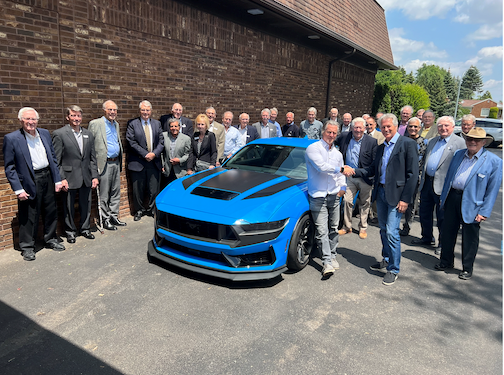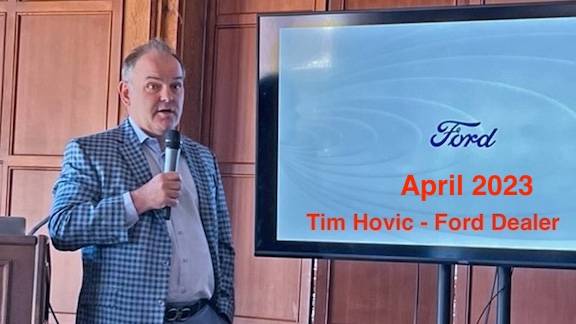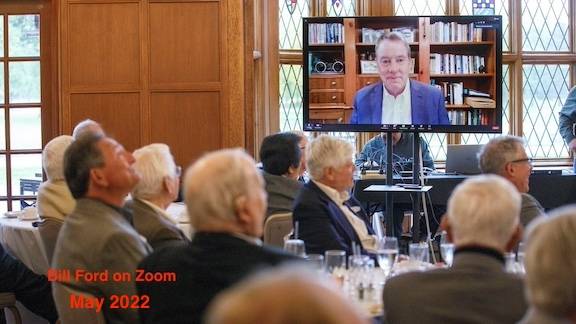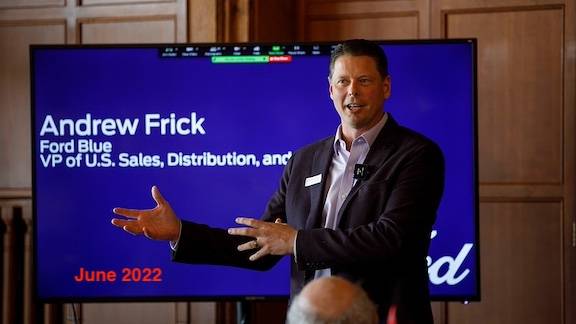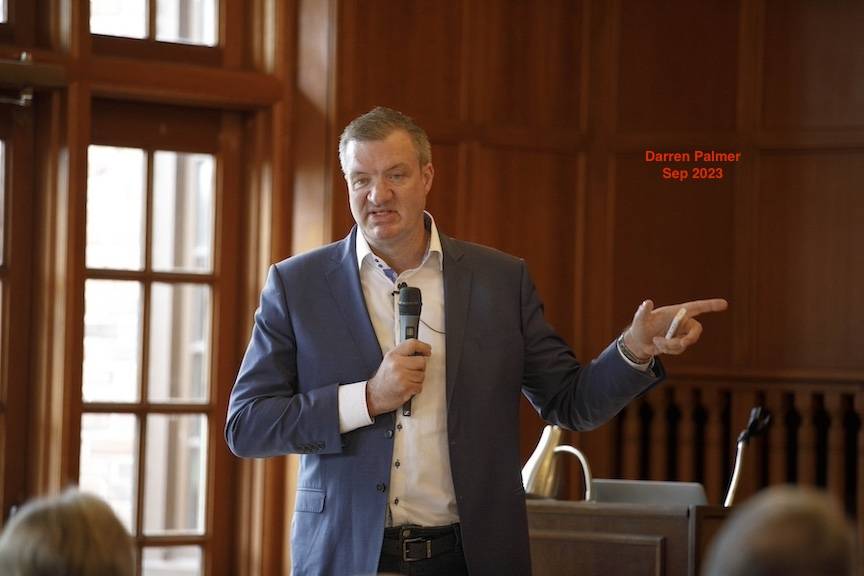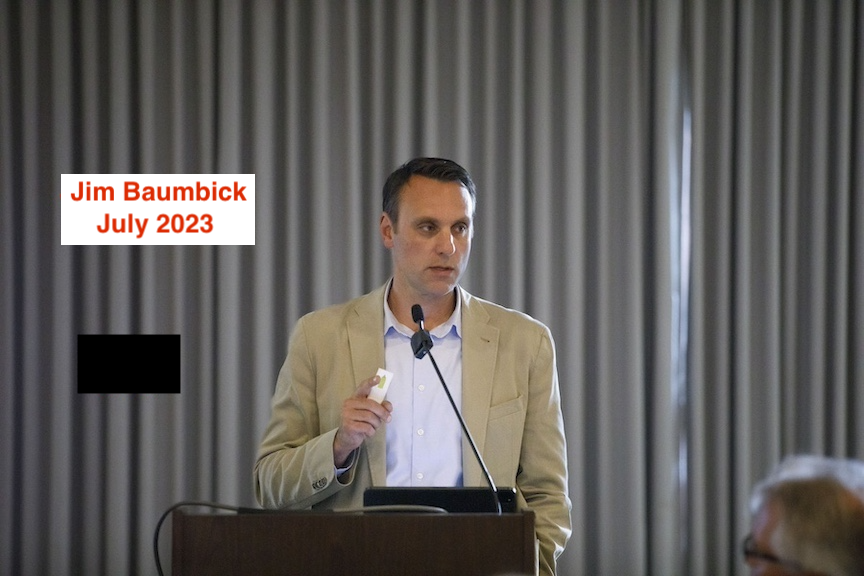Ford Engineering Laboratory
Old photos and history of our new building, the Ford Engineering Laboratory, brought to you by
b.a.dalrymple
In March of 1923 ground was broken for the FEL building. The building was built on the land that was previously occupied by Ford’s Dearborn Tractor factory. The Ford Engineering Laboratory was completed and ready for occupancy in December of 1924. It was an industrial marvel; as it was one of the largest open office spaces of its time. The building was designed and built by local architect Albert Kahn.
The Packard Plant that was designed by Albert Kahn. This design caught the attention of Henry Ford.
Highland Park Plant designed by Albert Kahn
Willow Run Plant designed by Albert Kahn. Ford built B24 Bombers here for WWII. This building is no longer standing but was magnificent in its day.
Ford Rotunda Building designed by Albert Kahn for Ford. This building was a huge attraction for families during the holiday season. It burned in the early 60s.
Kahn would also design the Fisher Building in Detroit and many more historic buildings and homes including one for Edsel Ford. To work in a building designed by Albert Kahn is equivalent to owning a home designed by Frank Lloyd wright.
Here is a sketch of the FEL building. Notice the publishing area for his newspaper on the left, the dance room on the right, and the antiques room where he stored antiques before the museum was built. There is a machine shop and pattern shop. Also of note is the tunnels that lead to the Powerhouse. Henry Ford loved his tunnels.
The new building was 1200 feet long by 204 ft wide.
Here is more formal sketch of the building in 1927. Notice that a dynamometer area had been added at the rear of the building and the clock shop in the middle. Henry Ford loved Clocks.
Here is a photo of the inside of the building during construction. The arched ceilings contained over 65,000 sq. ft. of glass windows to allow natural lighting in the work area. Rumor has it that the structure on top of the building was an inverted ship’s hull, but that is not true. That was just Albert Kahns design.
This photo is of the finished interior of FEL . The hard rock maple flooring is from Henry Ford’s own northern forests.
Preview of the City Center at the remodeled FEL building
Again a photo from the original construction of the building. The exterior beauty of the building is attributed to the materials used for construction. The facing material is Bedford Limestone from Indiana and the roof has a very distinctive look with red clay shingles.
When completed, the Ford Engineering Laboratory housed all that was necessary to design and test out the entire vehicle.
When the chimney on the powerhouse next to FEL was built, it was said to be one of the largest freestanding brick chimneys in the world!
Rear View of FEL from Greenfield village
Aerial view of completed building circa 1927
Notice that neither the village nor the museum exist at this time. And FEL has 2 ponds.
Oakwood Blvd
RailRoad Tracks
Ford Engineering Lab
Michigan Ave (US12)
This aerial view is circa 1930
Notice Henry Ford Museum and the village are now present.
Ford Engineering Lab
Henry Ford and his management team in 1932 against the backdrop of the interior of the FEL bldg.
Of interest to everyone is Henry Ford’s office in the FEL. Here it is circa 1924. Notice the Fire place, his desk, the curtains, the clock.
Henry Fords Office today Notice the Fire place, his desk, the curtains the clock are all the same.
Henry’s office in 1924 from the other angle. The door highlighted is now open with Plexiglas covering the opening so we can all peek inside.
This picture is from 1927 of Henry and Edsel commemorating the 15 Millionth Model T in front of FEL.
Henry Ford contributed to the aesthetics of the building by placing the names of 21 famous scientists and inventors across the top front of the building. Ford believed these men and women "contributed significantly to the advancement of arts and science of mankind". He also added the sculpted figurines on the corners and ends of the building, which are symbolic of agriculture, manufacture and transportation.
21 Famous Scientists and Inventors Adorn FEL
Darwin, Charles Ampère. André Marie Da Vinci, Leonardo F Franklin, Benjamin Fulton, Robert Whitney, Eli
Bell, Alexander Graham Marconi, Guglielmo Wright, Orville Burbank, Luther Edison, Thomas Alva
Burroughs, John Kirby, Frank E. Diesel, Rudolf Faraday, Michael Curie, Mme. Marie S. Newton, Sir Isaac Pasteur, Louis Galileo
Dunlop, Dr. James Boyd Otto, Nicholas A.
This is a photo of the original dance hall in the Ford Engineering lab.
Henry Ford hired a dance teacher, Benjamin Lovett, to teach his executives early American square dancing. Mr. Ford invited all of his executives to take lessons. He was quick to tell them that he wanted them to take these lessons of their own free will, and not under any pressure. However it is said that an invitation from Mr. Ford, was the same as a command. Therefore Benjamin Lovett never lacked for a large crowd. Shown here are students who most likely were students at the Edison Institute from next store at the museum/village.
This is the area of the FEL that was used for publishing the weekly newspaper.
The Dearborn Independent, was published by Henry Ford from 1919 through 1927 at FEL. The paper reached a circulation of 900,000 by 1925, second only to the New York Daily News.
What Did They Do Here?
The 1928 Model A Ford was designed at FEL. Edsel show here in a 1928 Model A
What Did They Do Here?
A briggs bodied Model A fordor 1928 in front of FEL
What Did They Do Here?
The one-piece V8 engine block was designed at FEL.
What Did They Do Here?
Body Styling was also done at FEL, shown here is a 1940 Clay Model of a Lincoln Continental
Things You’ll Want to See
The brass framed pillar that shows how tall each of the 1938 management team were. This is located on the C10 Pillar (to the right of the city center).
Things You’ll Want to See
The large Safe upstairs The large safe upstairs, in which the company payroll was stored in the early days during an era of bank mistrust.
Things You’ll Want to See
The names and medallions on the front of the building representing 21 people who Henry Ford believed contributed most significantly to the advancement of arts and science and the advancement of mankind".
Things You’ll Want to See
The sculpted figurines on the corners and ends of the building, which are symbolic of agriculture, manufacture and transportation
I hope that on your first day at FEL you walk into the building thru the front doors into the lobby down mahogany row and experience all of the beauty of the building. You will be walking into history and beginning your own history too.
b.a.dalrymple
Many Thanks to:
Jamie Myler Senior Archivist
Tom Miller TS @ Engine
Tom Wagner (1932 Management Photo) Brian Utley (Henry Ford Online Collection of Photos)
The End
Henry Ford Collections Site
http://collections.thehenryford.org/Collection.aspx

